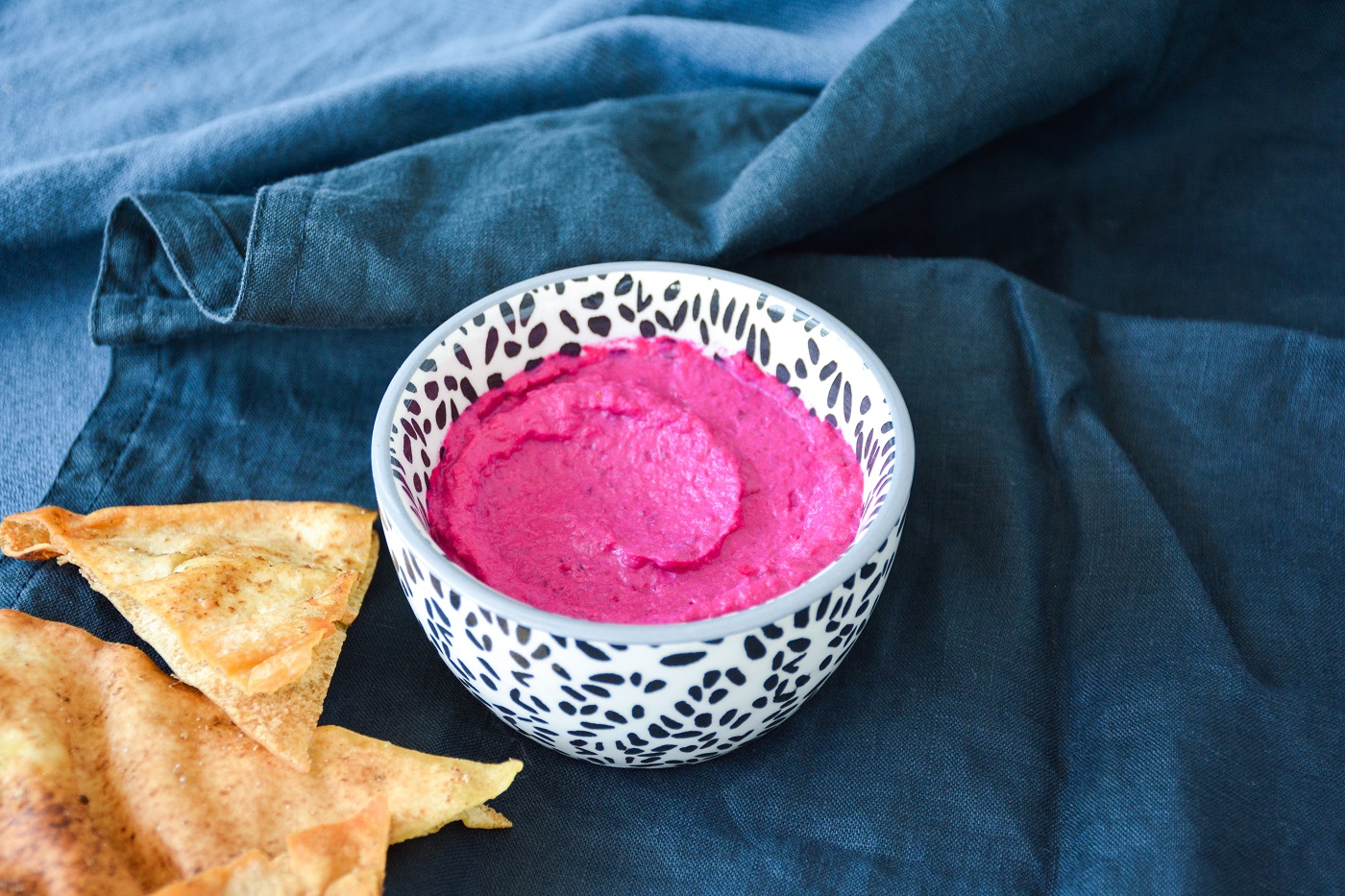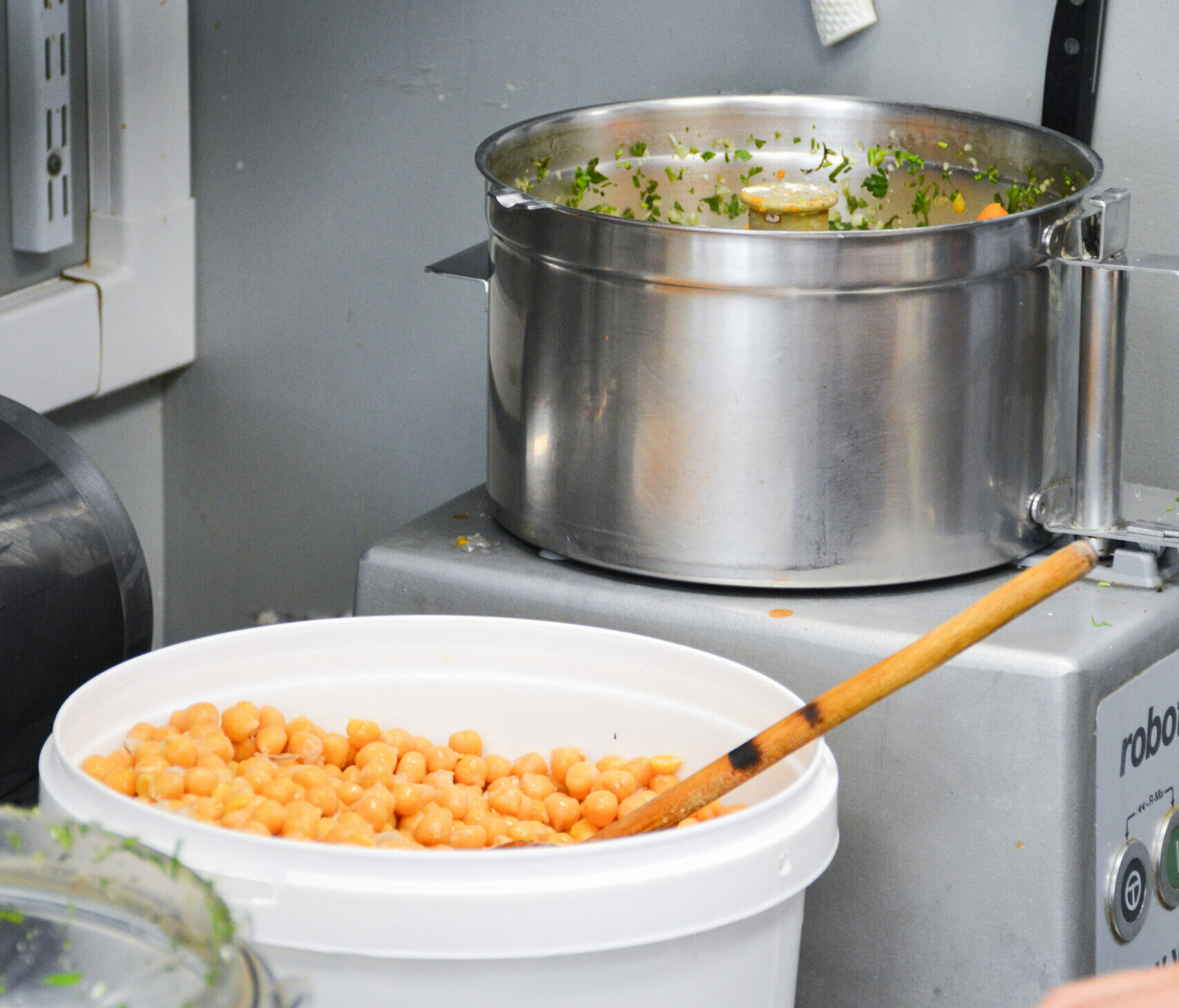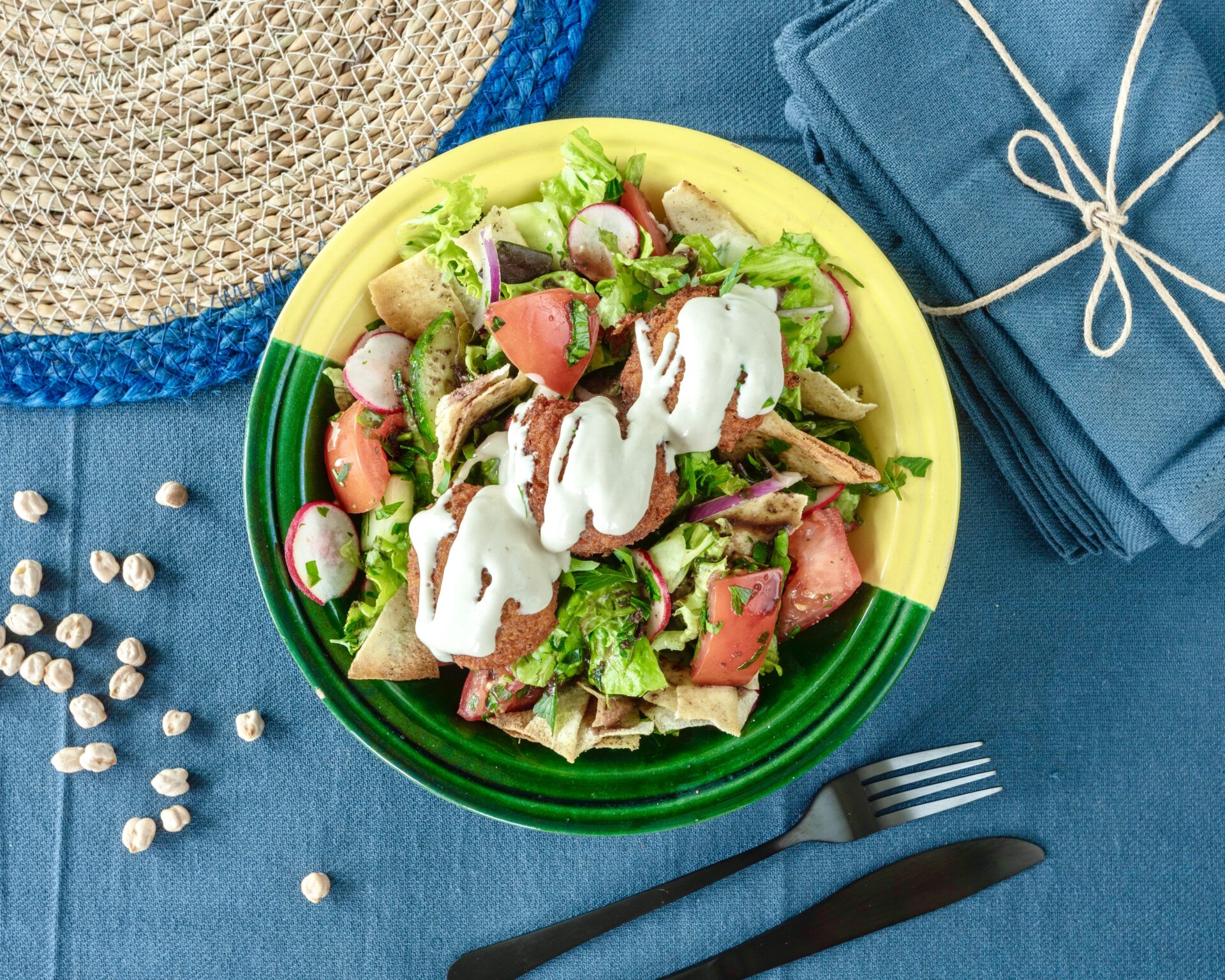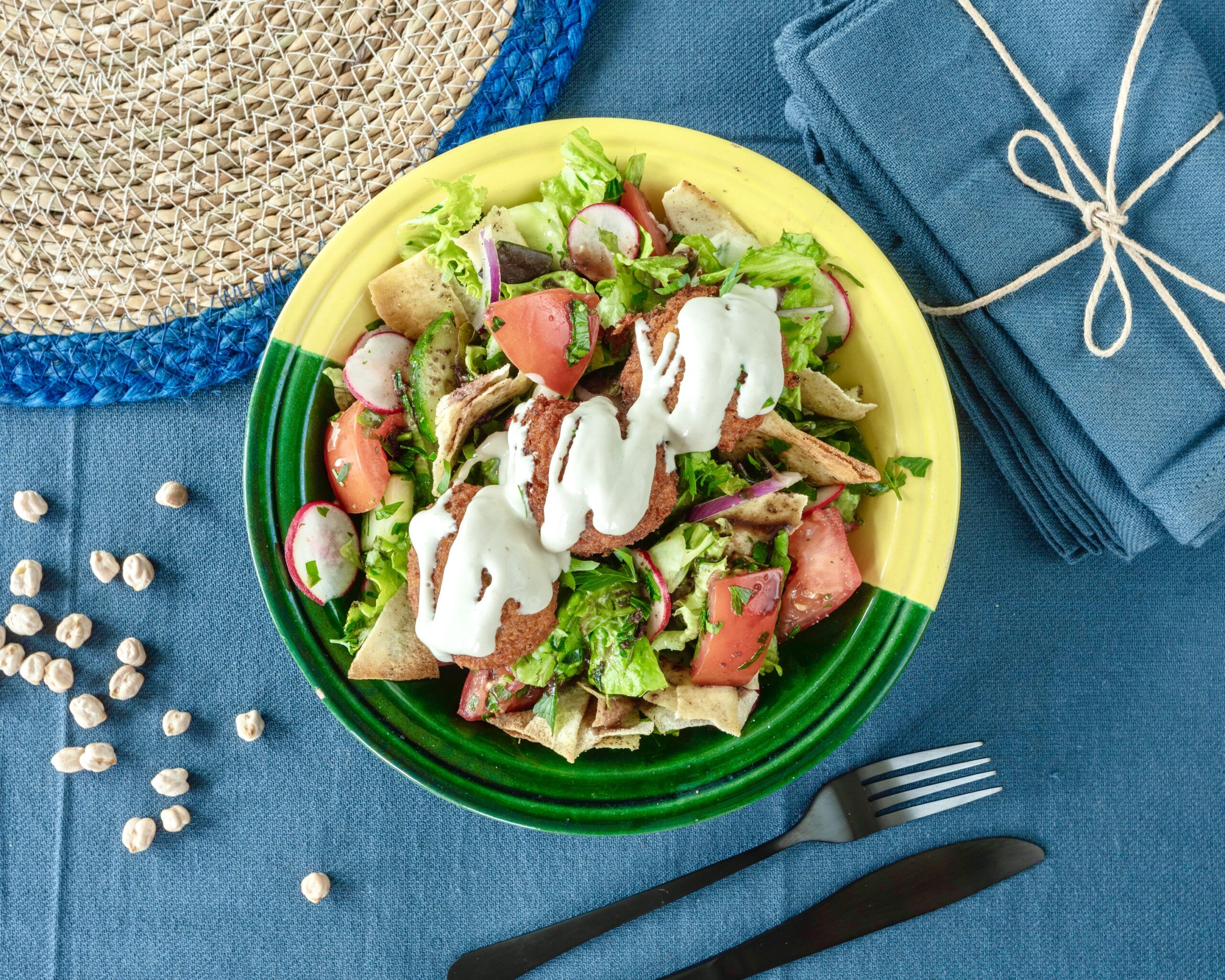Legumes, which are also called pulses, are foods that are unfortunately little known and little consumed in the “modern” industrial diet. Yet they are a treasure trove of nutrition.
Legumes are vegetable plants whose fruit is a pod, and which are cultivated for the purpose of obtaining edible dry grains. Among the best known are chickpeas, broad beans, red and white beans or lentils. These are ancestral plants, originating from the Mediterranean for some, and from Asia for others.
Moreover, most ancestral peoples have adopted them in cuisines all over the world, from the Mediterranean hummus (made with chickpeas) to the traditional English breakfast (white beans in sauce) via the Indian dal (peas or lentils).
✨
At the house of Libshop, we are specialized in the manufacture artisanal of mezzes, shawarma, falafel, Lebanese-inspired dishes and pastries for more than 10 years.
👉 Book your table at one of the Libshop restaurants in Paris
👉 Order Libshop for click & collect or delivery
✨

Even if they are a little tedious to cook, more in any case than rice or potatoes, they have two major advantages: their delicious taste when they are well declined in the kitchen, and their health benefits. This is the second point that we will address here. And the reasons why legumes are good for your health are manifold.
Their richness in fiber stabilizes blood sugar
Thanks to their substantial fiber intake (8g for 100g of cooked chickpeas, against 2g for white pasta), they benefit from what is called a low glycemic index. However, a number of studies have shown that diets that favored foods with a low glycemic index, such as legumes, reduced the risk of obesity and abdominal adiposity.
One of the most effective techniques to prevent overweight, and to get rid of it little by little, but also to have more stable energy throughout the day, is not to raise blood sugar too frequently and too suddenly, as this leads to a rise and conversion of excess blood glucose into body fat (in fatty tissue and organs). Besides, it overtaxes insulin, which can have long-term health consequences.
To smooth the blood glucose level, nothing beats – or almost – the virtues of legumes, consumed as an accompaniment or sometimes replacing an animal protein for example, because legumes have a glycemic index and a glycemic load much lower than other known starches, while having a very high protein intake, but we will come back to this.

They therefore have a very interesting balance between their carbohydrate intake leading to a limited increase in blood glucose, and their vegetable protein intake. They can therefore, in most cases, replace fries, rice or pasta.
If we take the example of fries, their glycemic index is 75, which comes on top of their method of cooking with vegetable oils of questionable quality. That of the potato fluctuates between 65 and 90 depending on whether it is boiled or mashed. As for the GI of chickpea, it is only … 28.
Their high fiber content has positive effects on the microbiota
The gut microbiota, also called intestinal flora, is the set of micro-organisms (mainly bacteria) present in our digestive tract. It is a combination of 100 trillion bacteria from over 400 species. In symbiosis with the intestine, the microbiota contributes to the proper functioning of digestion and immunity.
To improve our intestinal microbiota, we must give it both probiotics, which are good bacteria that it needs, but also prebiotics, which represent what will feed our bacteria. And it is precisely the consumption of vegetables, legumes, spices but also red fruits in particular which will positively influence the composition of our intestinal microbiota.
When the good bacteria are rich in variety and number in our intestinal flora, they contribute to the maintenance of a healthy weight, strengthen our immunity, OUR vitality and our long-term health. The microbiota also influences our mood and our moral.

As you will have understood, among the top foods good for the microbiota, we find legumes, spices, whole grains, sourdough bread, but also fermented foods such as kefir, kombucha, tempeh or miso, and of course foods rich in polyphenols typical of the Mediterranean diet such as berries, green tea, dark chocolate.
Their high fiber content increases satiety
In addition to their richness in vitamins and minerals, legumes are extremely rich in fiber. For example, 100g of chickpeas provide no less than 16g of fiber, compared to only 3g of fiber for 100g of brown rice. You now understand why some legumes are sometimes difficult to digest, especially if you consume too much of them without being used to them and without having fed your intestinal flora with the good bacteria (the famous microbiota), but the positive counterpart of this is 'is that legumes are a great alternative to white grains on the plant for health and weight loss.
Indeed, not only legumes provide more protein and less carbs in proportion to their cereal cousins, but in addition, they provide a lot more fiber which will delay the digestion process, and even decrease the digestibility of carbohydrates. It is in particular the soluble fibers that will bind to the fats and sugars and reduce their absorption and their use in the body.
If from the point of view of the survival of the species, legumes are less effective than other starches, they are formidably more interesting in terms of health and weight loss in our modern societies where we consume precisely too many calories compared to our energy expenditure.

This also explains the fairly low glycemic load after a meal containing legumes, and which will therefore make it possible to maintain the level of insulin quite low and therefore not to cause reactive hypoglycemia and cravings a few hours after the meal. Consuming legumes would therefore help to fight against snacking episodes.
Therefore, legumes are the best allies of sedentary people, that is to say the majority of people who work in an office, and who precisely wish to increase their satiety, take pleasure in eating without reducing their portions. In equal quantity with a cereal competitor or a root vegetable very rich in starch like the potato, they will tend to be less metabolized by the body, therefore provide fewer calories, while benefiting from a good satiety and an energy supply that is still tangible, and more in line with the more or less sedentary and comfortable current lifestyles.
Legumes therefore have an excellent quantity/calorie/fiber/protein ratio than many other foods.
Legumes are rich in plant protein
Still in the same logic as the previous point: with equal intake, legumes will provide more protein, and therefore less carbohydrates in proportion, than a portion of another starch for example. This is very interesting data because this high protein content will naturally moderate your carbohydrate intake, without necessarily having to reduce the portion on the plate, and while swapping this "lost" part of starch for a part of protein. , which is an essential macronutrient. To put it vulgarly, "we gain a little from the change".

The balance proteins / carbohydrates / fiber legumes is often more favorable than other starchy foods from a health and weight loss point of view. First of all because proteins provide the body with essential amino acids that may be lacking, but also because the protein intake and the non-negligible fiber intake of legumes lead to a greater sense of satiety, which goes in the direction of a better weight of shape and a better general health.
Moreover, one of the common problems of people who adopt a healthy and very vegetable diet is to meet the recommended protein intake. Pulses can thus partially answer this question.
Legumes are good for health
Due to their central position in the food pyramid of the Mediterranean diet, legumes are the health asset par excellence of the populations of the Mediterranean “Blue Zones”, those areas of the globe where life expectancy in good health beat records.
Whether for liver health, cardiovascular health, or for longevity, studies have shown that consumption of legumes showed positive effects.
They are associated with a lower risk of non-alcoholic fatty liver disease (excessive accumulation of fat in the liver), better cardiovascular health thanks to their potassium, magnesium and dietary fiber intake, and their regular consumption would reduce cancer risks.
Pulses have a positive effect on the environment
Legumes have a natural propensity to fix nitrogen, which allows increase soil fertility and of reduce dependence on synthetic fertilizers used to artificially introduce nitrogen into the soil.

In addition, this nitrogen fixing property allows increase biodiversity, and to issue less greenhouse gases, which are released during the manufacture and use of fertilizers.
Which legumes to choose?
In practice, here is a list of legumes commonly consumed in the Mediterranean regions, and more generally in certain Blue Zones:
- beans
- Chickpeas
- Lenses
- Dried beans
- lupines
- Peas
- Soy
- Carob
We can also add here peas and green beans, which are not necessarily considered as legumes, but which have more or less the same energy properties, although straddling green vegetables and pulses.
In fact, they are eaten before their maturity, but like legumes, they are more energetic than most fresh vegetables (hence their classification between vegetables and legumes, the latter being richer in carbohydrates) .
How to include legumes in your diet?
A gentle introduction
Legumes often require special treatment. For example, you will need to soak chickpeas and broad beans for 24 hours if you want to reduce the antinutrients that could cause digestive discomfort.
Indeed, if plants provide humans with beneficial nutrients, they can also provide antinutrients. These are for these plants defense mechanisms against external aggressions, such as insects, or simply human beings. Over the centuries, humans have managed to develop techniques to limit the harmful effects of antinutrients. We find soaking, which eliminates phytic acid from legumes, for example, germination, fermentation and quite simply cooking.

In addition to preparing your legumes properly beforehand, it is also recommended, as with vegetables, to introduce their consumption gradually when you are not used to a mainly plant-based diet. The reason is intimately linked to the state of the microbiota: the less the intestinal flora has been “nourished” with good bacteria, the less the intestine will be able to process these new plants which arrive overnight.
This is why it is good to go very gradually, little by little. First by adding fairly common vegetables, then vegetables that are sometimes more difficult to digest such as broccoli or cabbage, and finally legumes for those who have never eaten them. The same is true with other foods considered "medicinal", such as garlic or onions.
A varied diet focused on pleasure
When you want to improve your diet to make it a health asset, the most important thing is to stay in a perspective of social and gustatory pleasure. This is also one of the lessons of the Mediterranean diet, which places social ties and the fact of meeting and having pleasure while eating, at the center of the food pyramid.
The idea is therefore to move away from mono-diets and food injunctions, not only to take advantage of the pleasure that we get from all foods, but also to take advantage of the nutrients that certain foods provide, and other nutrients that other foods can provide.

So the first thing to reconsider is that you can regularly eat legumes as a side dish because you know they can be good for your health and for the environment, without making it the only starch on our plates. Nothing prevents us from rotating them or accompanying them with other types of starchy foods such as potatoes, rice or even bread, taking pleasure in tasting this diversity of foods.
If we can favor starchy foods with a low glycemic index in general, it is still important to remember that we can not make it a rule.
Then, the most effective way to introduce or reintroduce legumes into your diet, consists in sublimating them in original recipes, sometimes ancestral, sometimes creative, in order to derive pleasure from these ingredients.

The Mediterranean diet – and not only – is full of recipes based on beans, broad beans, chickpeas which are absolutely delicious. Falafels, hummus, balila, chili con carne, mujadarra, lentil soup, there are a multitude of ancestral recipes, or to be created, around legumes, and the web is full of ideas.


